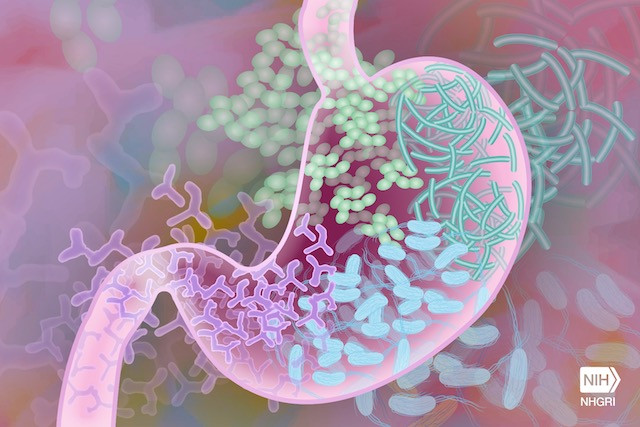This vogue has not only caught the scientific imagination, but also the popular one. Books on the subject abound, from popular science, such as Ed Yong’s I Contain Multitudes and Rodney Dietert’s The Human Superorganism, to diet books including Michael Mosley’s The Clever Guts Diet.
The problem with the lure of the microbiome is that the correlations that underpin these studies are much more complicated than simple cause and effect. Such relationships can be very misleading. The number of people who drowned by falling into a pool in the US in period 1999-2009, for example, correlates bizarrely well with the number of films that Nicholas Cage appeared in across the same ten year period. But we don’t tend to argue that one causes the other.
While microbiome studies promises genuine advances in many fields, it is, as Harvard professor of epidemiology William Hanage notes, in danger of “being drowned in a tsunami of its own hype”. Other promising emergent fields, like epigenetics, simply haven’t entered the popular sphere with anything like so much drama or success. So why does the microbiome hold so much cultural currency? I suggest that the answer might lay partly in our cultural indebtedness to the Victorians.
What is health anyway?
Microbiome studies advances a radically different model of the healthy body, challenging our sense of what it means to be human. The idea that humanity might find meaning in symbiosis (like lichen, the very identity of which is built on organic relationships) is appealing. This is not only for its political implications, but because it offers a reprieve from full responsibility. “Are the bacteria in your gut making you fat?” asks Cycling Weekly. But unlike genetic explanations for pathology, explanations based on gut bacteria offer people the chance to change their “predispositions”.
Changing your gut bacteria has been billed as a panacea-like fix for all our health needs. This desire for a holistic solution brings to mind Victorian patent medicine with its many pills promising to be all-singing, all-dancing, and all-curing. Holloway’s 19th century pills and ointments, for example, were marketed as curing everything from pimples to gout. Such treatments claimed to restore general “health” (whatever that means), like recharging a battery. Despite our ridicule of this kind of Victorian quack-doctorism, we still share the Victorian fantasy of a “one pill cures all” kind of medicine.
It’s not just this desire for panaceas that connects the Victorians to our current cultural moment. We have witnessed a plethora of diets from no-carbs to ketones, and from clean-eating to the 5:2. This perhaps explains why microbiome studies is so popular – its chief therapeutic intervention being dietary. This obsession with diet is also a legacy of the 19th century, which witnessed a widespread pathologisation of fatness and London’s first vegetarian restaurants.
The gastric body
The idea that food and its impact on the gut might be the key to wider health and well-being was a fundamental tenet of 19th-century medicine. Ill-health was often articulated through the language of the gastrointestinal region, with terms like “dyspepsia” signifying not only chronic indigestion, but a diverse range of disruptions to physical and mental harmony.
The dynamic relationship between stomach and mind underpinned health and featured in medical essays, but also in novels and poems. While doctors writing about dyspeptic hypochondriasis might argue that digestive health and emotional well-being were interconnected, novelists would acknowledge the same kinds of connections in their novels.
Camilla in Charles Dickens’s Great Expectations (1861), for example, says: “If I could be less affectionate and sensitive, I should have a better digestion and an iron set of nerves.” What is being articulated here is what modern scientists refer to as the gut-brain axis, a pathway that has been implicated in chronic depression and anxiety disorders.
Allies and room-mates
We often think of the late 19th century as ushering in the fear of germs. But we forget that the Victorians were also attune to the benefits of living symbiotically. In H.G. Wells’s The War of the Worlds (1898), mankind is ultimately saved by a hard-won symbiosis with bacteria, our “microscopic allies”.
Earlier in the century, M. Easter-Ross had referred to microorganisms as “joint tenants”, while The Saturday Review argued that man could be envisaged as a law firm, “Homo & Co.”, with “one large shareholder and numberless small ones”. Such metaphors, which dominate microbiome studies today, encourage us to see our bodies as semi-porous ecosystems underpinned by complex neurochemical relationships.
These kinds of metaphors, together with ideas about the “second brain”, form a powerful cultural narrative in part because they are, in fact, familiar. The complex intertwinement of the emotional and the physical, of human and microbe, of self and other (or is it still self?) that we are becoming familiar with is also latent in Victorian models of the body.
![]() Microbiome studies offers us a different way of thinking about identity that promises a shift in our approach to health and well-being. But we must recognise that its popularity is not based on scientific merit alone. By engaging critically with the medical and cultural ideas that historically inform this “new-found” model of health, we might more fully appreciate its potential and be more wary of its “hype”.
Microbiome studies offers us a different way of thinking about identity that promises a shift in our approach to health and well-being. But we must recognise that its popularity is not based on scientific merit alone. By engaging critically with the medical and cultural ideas that historically inform this “new-found” model of health, we might more fully appreciate its potential and be more wary of its “hype”.
